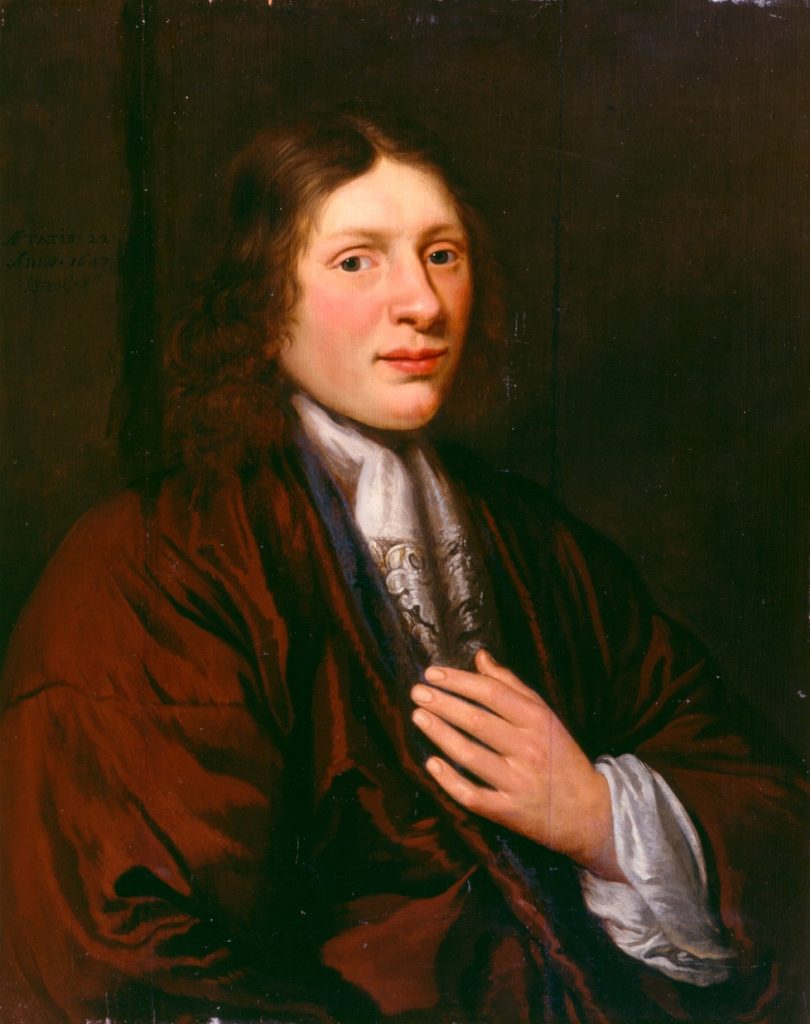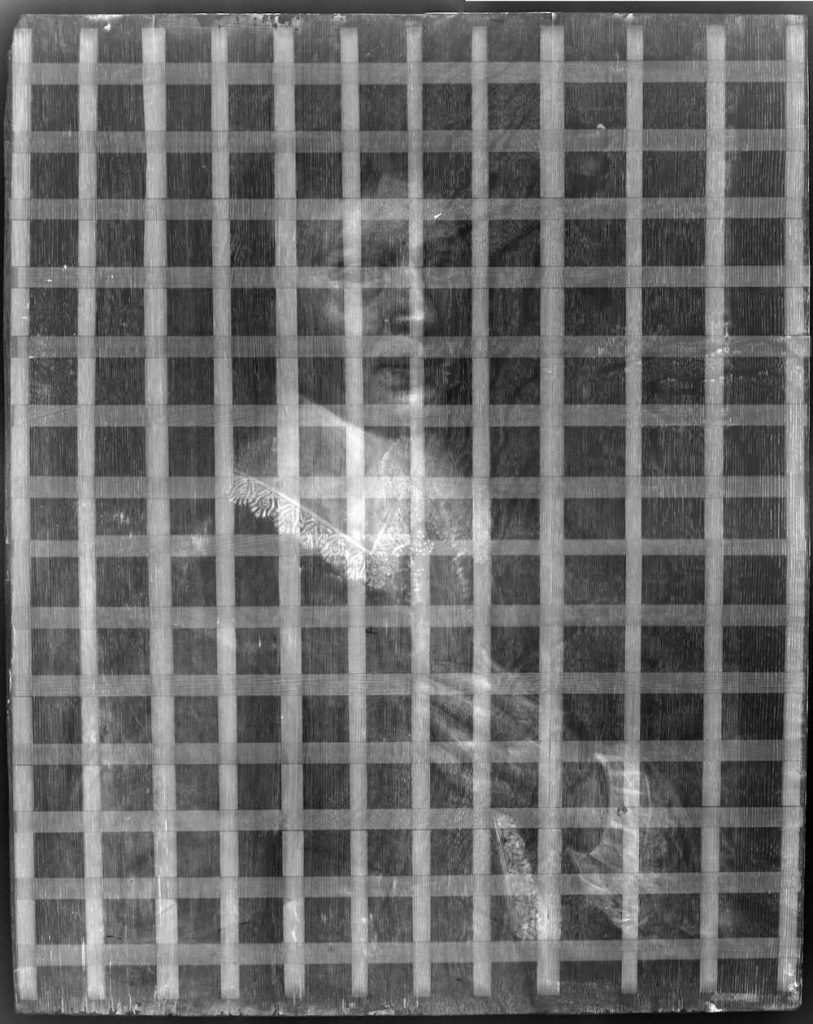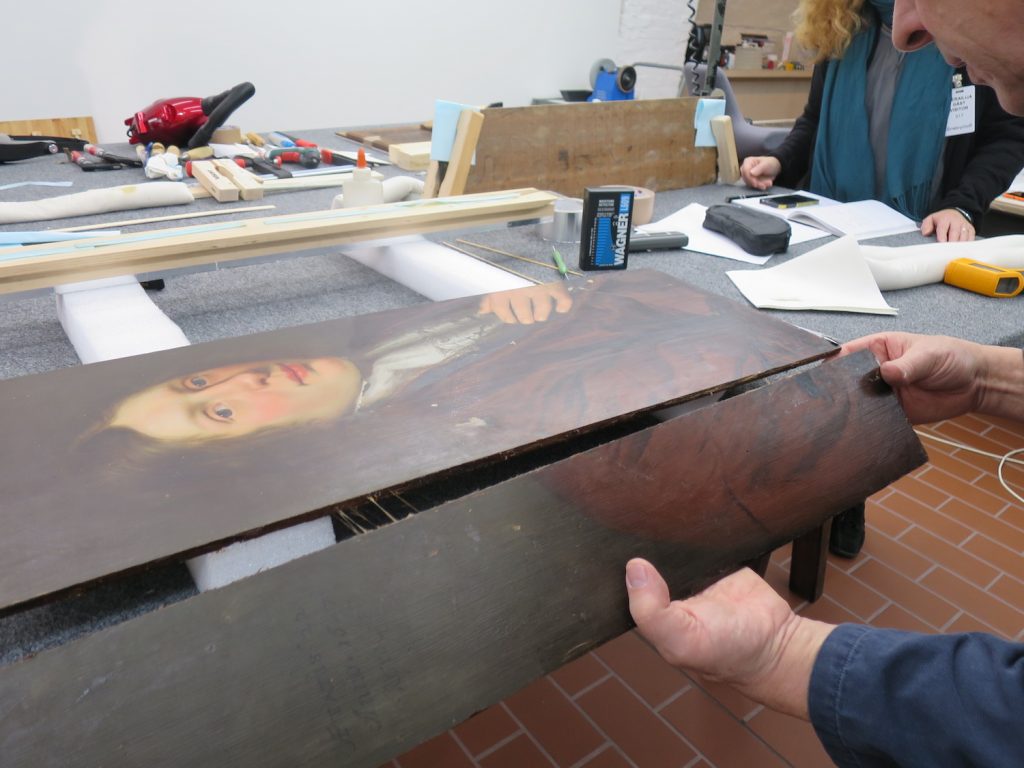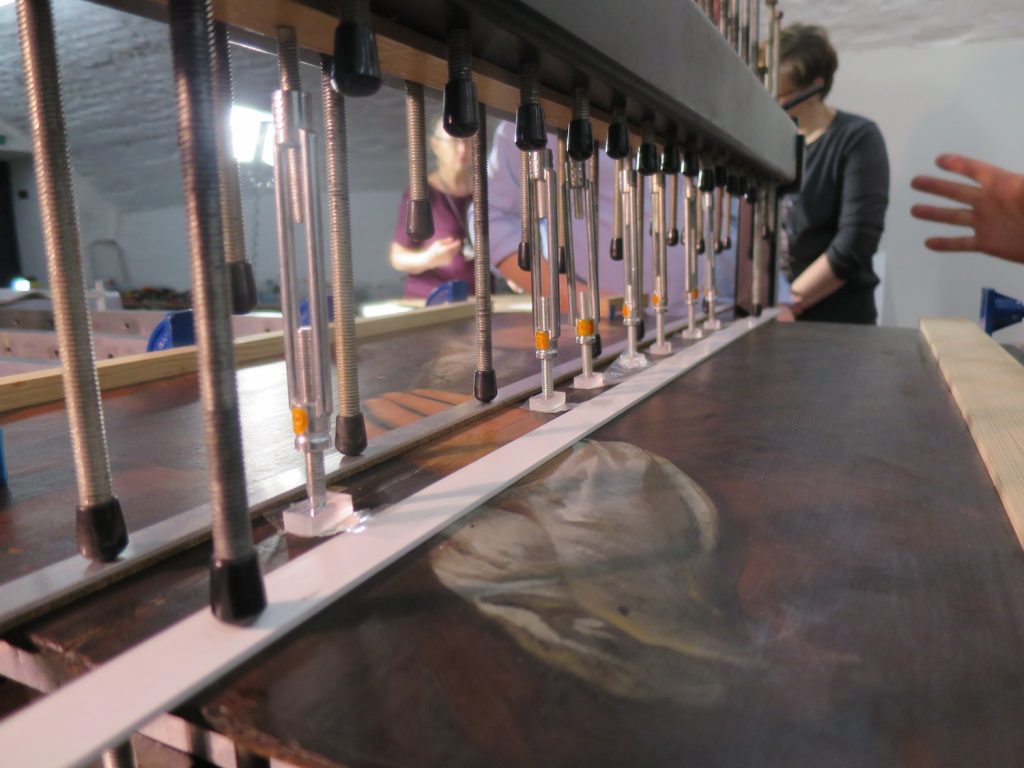The Mystery of the Man in Black
DECEMBER 2020
Gösta Serlachius Fine Arts Foundation’s collection comprises Portrait of a Man in Black painted by Rudolph Van Grol in 1647. The artwork’s name has been puzzling because the man in the picture wears a coat that is clearly brown. A clarification for the name became obvious when the painting created on a panel was conserved. On the same occasion it underwent a more detailed inspection.
Systematic conservation of European master paintings belonging to the Fine Arts Foundation’s collection has been on-going for ten years. In the project, a special attention has been attached to the conservation of artworks painted on wooden panel. Conservation on panel paintings has been carried out by conservators Olli Poijärvi and Minna Matis from Consart Ltd.
The panel of Van Grol’s painting had been planed straighter in an earlier conservation and parqueted, in other words, supported by a glued lattice-like wood construction, the purpose of which was to prevent the deformation of the panel. Parqueting was a popular support structure in European panel paintings from early 19th century all the way to the first part of the 20th century.
Parqueting of Rudolph Van Grol’s painting in the 1940s had prevented the panel’s natural reaction to variations in relative humidity of air which has caused some cracks, typical of panel paintings, in the direction of the grain of the panel. Also, the adhesion of the three boards of the panel had partially been opened due to poorly glued joints and alternating conditions.
During the conservation, the parqueting of the artwork was removed and the joints adhering the panels were opened carefully by heating slowly the adhesive used in the joints and taking care not to damage the painting. Opening one joint took several hours. After cleaning, the boards were rejoined using a custom-made compression table.
After the conservation and restoration, the work was attached to the frame solely from the middle section of upper and lower edges. This way the natural adaptation to variation of humidity which occurs to some extent even in museum environment does not present any danger of cracks in the panel.
Already before the treatment of the panel, dirt hade been cleaned from the surface and detached paint had been reattached. Yellowed layers of varnish and old disturbing retouches and overpaintings had been removed. After the structural conservation, the conservation of the paint surface was carried out by new restoration painting and new varnishing.
During conservation researches was discovered that an earlier layer of paint lied under the layer of brown paint. This could be detected when impastos on the surface of the paint were examined in sidelight. In a radiographic image one could clearly see that the housecoat covered the man’s previous clothing. This also was an explanation for the name of the painting.
The man’s black suit, white collar with lace lining, lace decorations on the cuffs and on the front edge of the coat have been covered with an attire that has been fashionable at a later point in time. At the same time, the narrow shoulder line of the model has been shifted higher and wider. The styling has been carried out about fifty years after the portrait had been completed, most likely when the model was still alive, but Rudolph Van Gol had already passed away.
Even though the brush technique on the brown housecoat and scarf does not reach the elaborate level of that on the original clothing, the early date of the change endorses the preserving of the later outfit. Black costume has been documented in connection to conservation and preserved under the housecoat.
Riitta Fager
Conservator





